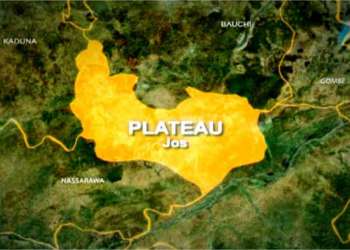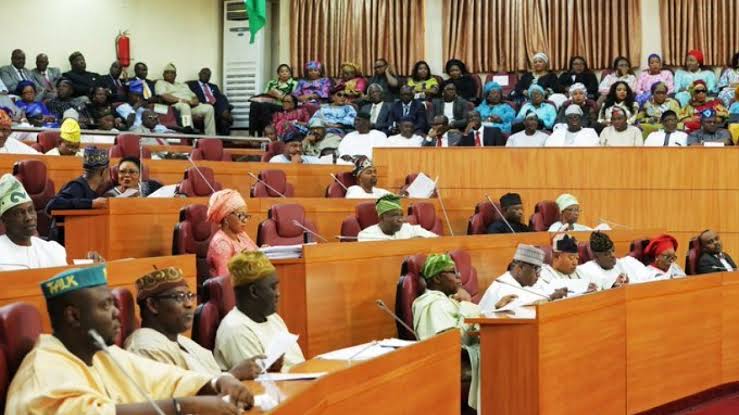The federal government’s roadmap to revitalize the Primary Health Care (PHC) services across the country as part of the agenda to boost healthcare in the rural areas has begun to manifest with the visit of the Minister of Health, Prof. Isaac Adewole, to Nassarawa State to inspect three Primary Health Care facilities.
The Primary Health Care facilities visited in the first phase of the tour are located in Andaha, Akwanga Local government area, Wulko and Alizaga both in Nassarawa Eggon Local Government of Nassarawa state.
He explained that health care facilities were funded in three ways namely Result Based Financing (RBF), Performance Based Financing (PBF) and Decentralised Facility Financing or Direct Facility Financing (DFF).
Underlining the essence of his tour, the Health Minister said part of the challenge is to decide the ideal method to use in funding the Primary Health care facilities across the countries. “Part of our challenge is to decide which one we are going to use to fund PHCs all over the country. Maybe I am biased, but I am a supporter of DFF and if you ask me to grade the PHCs I have visited today, the DFF is the best, followed by the one in Akwanga and then the other one at Wulko.
“Our job is to adopt a model that is peculiar to the people as we don’t want to do anything that is strange to them, we want the people to decide on their own, which model to adopt, and own it,
Under the new arrangement the ministry will revitalise three health care facilities in three different pilot states of Adamawa, Nasarawa and Ondo States in order to determine, which model of funding to recommend to state governors for the PHC which would be implemented by the people who are expected to own and manage the facilities.
He emphasized the fact that the PHC won’t be owned by the federal government or the state but the people at the local level and added that the state can render support.
According to him, the federal government intends to have one state-of-the-art PHC in each of the 774 local governments across the country and would probably adopt the Decentralised Facility financed model.
He said though most of the PHCs are owned by state governments, the federal ministry of health will also solicit support from President Muhammadu Buhari, to assist states in getting the required funds from international donors to assist the country in the provision of health care facilities for the people.
Prof. Adewole used the occasion to plead with state governors especially his host Governor, Umaru Tanko Al Makura to allocate more resources to the health care sector, describing such a gesture as a win-win situation.
He noted that once there is an excellent facility at the local level where people can treat Malaria fever, attend anti-natal, deliver safely and immunise their children against killer diseases, most state governors won’t need to give money to the electorate to vote for them during campaigns as the people will identify with such a government.
“Investing in Primary Health Care facilities is a win-win, as I have said severally, if you invest in PHCs, it is certain the people will vote for you. They will identify with you because you have identified with them,” the Health Minister said.
He told the Nasarawa State Governor that the federal government will support the State’s School of Nursing in its bid to provide middle level man power to the state by ensuring that its programme is fully accredited.
READ ALSO: Buhari TV documentary out tomorrow
The Minister of Health also promised to promote partnership between the federal government and the state in the deployment of medical doctors on the employ of the federal government to assist the state government in its health care delivery programme.
Responding, Governor Al-Makura thanked the federal government for the gesture of selecting Nassarawa , as part of the three states in the pilot scheme to revitalize Primary Health care services in the country.
Gov. Al-Makura told the minister that the health sector has been the priority of his administration since his assumption of office, saying in the past two years his government has embarked on the rehabilitation of facilities in the hospitals across the state, as well as provision of drugs and prompt payment of salaries to doctors and other health workers in state employment.
He therefore pledged his administration desire to support the project to make sure that primary health care service gets back to what it was before in the interest of the rural populace.
The Next Edition gathered that the tour of the primary health care facilities in the state was part of a mid-term review of the implementation and impact evaluation of the Nigeria State Health Investment Project( NSHIP) in the three pilot States of Adamawa, Nasarawa, and Ondo, and was designed to assist the Federal Government in deciding which funding method is best for the management of Primary Health Care Centres, PHCs, across the country.
We further gathered that Health minister’s road map is to set up a model PHC in each of the 774 Local Government Councils across the country that would be supported by the Federal Government with funds coming from International donor organisations.
In Nigeria, primary healthcare was adopted in the National Health Policy of 1988 as the cornerstone of the Nigerian health system as part of efforts to improve access and utilization of basic health services. Since then, primary health care has evolved through various stages of development.
In 2005, primary health care facilities were found to make up over 85% of health care facilities in Nigeria.
There were three major attempts at evolving and sustaining a community and people oriented health system in Nigeria. The first attempt occurred between 1975 and 1980. The fulcrum of this period was the introduction of the Basic Health Services Scheme (BHSS).
It came into being in 1975 as an integral part of Nigeria’s Third National Development Plan (1975 – 79) and was structured along ‘basic health units’ which consisted of 20 health clinics spread across each LGA, which were backed-up by four primary health care centres and supported by mobile clinics serving an approximate population of 150,000 each.
The drawback of this attempt was the non-involvement of local communities who were the beneficiaries of the services. This led to the inability to sustain the Scheme at the close of the third national development plan period.
A second attempt which was led by late Prof. Olukoye Ransome-Kuti, occurred between 1986 and 1992. This period was characterized by the development of model primary health care in 52 pilot local government areas all of which were implementing all eight components of primary health care.
A key result of this dispensation was the attainment of 80 percent immunization coverage for children under five years.
It is significant to note that successive administrations have failed to take significant steps towards broadening the scope of PHCs across the country.











